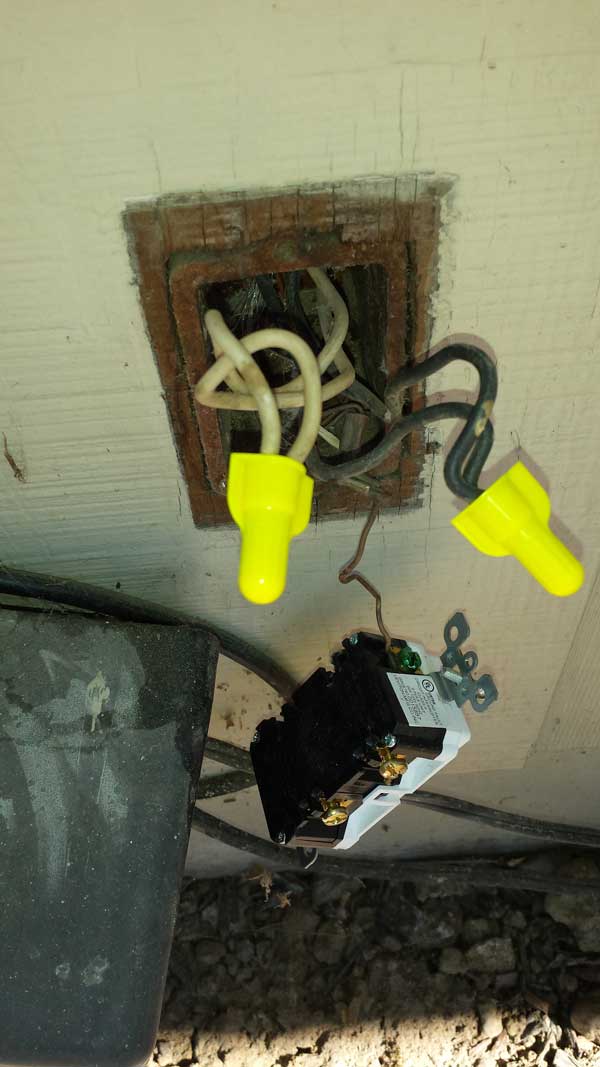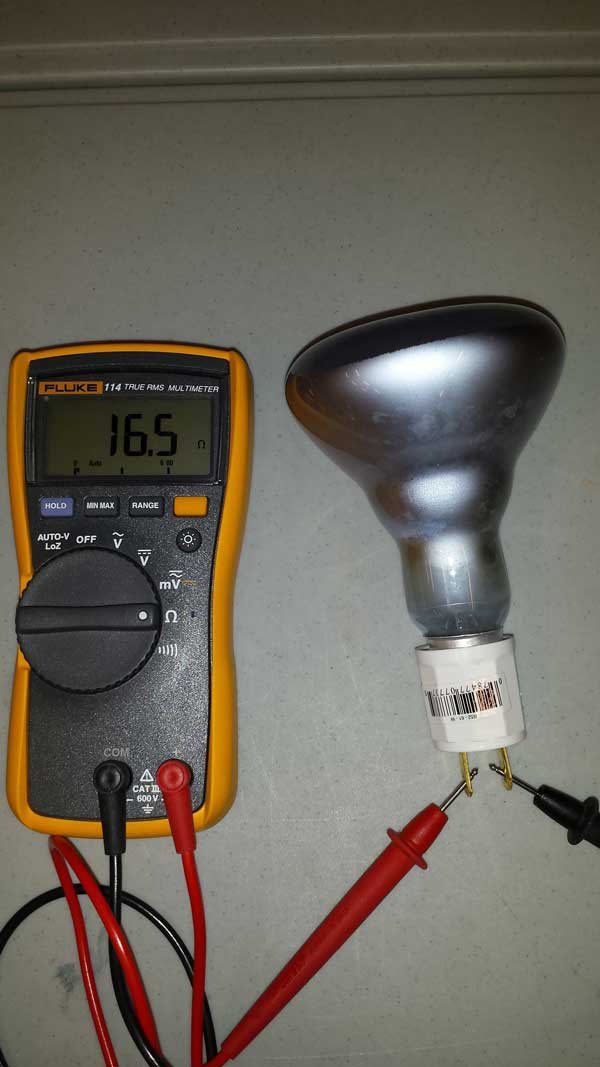Notes from the Field

Episode 10: Ohm's Law is Giving Me the Cold Shoulder
By Jimmie Slemp
Identifying details have been changed to protect the innocent and not-so-innocent.

I was given a call about some lights at a residence not working. When I arrived, the customer was able to give me some insight into what happened prior to the lights going out. As it turns out, they were doing some yard work in the front and using the GFCI. The GFCI tripped and the lights quit working. This was some valuable information because I would not have assumed the lights would be on the “load” side of an exterior GFCI.

I proceeded to investigate the GFCI in question and found that it was indeed wired “Line & Load” and would not reset. (Fig.1, top left – GFCI bypassed for testing). Before assuming that it was just a bad GFCI, I decided to put an ohmmeter on the circuit that was feeding the lights. The reading on the ohmmeter was only 2 ohms. So, using ohms law, I ran the numbers through my head: 120 volts / 2 ohms = 60 amps. 60 Amps = there must be a problem with the circuit! I started to trace the circuit and found that it went to a 3-gang switch box feeding a porch light, entry way pendant light, and a string of hallway lights. I tested the circuits individually and nothing appeared to be out of the ordinary. None of the circuits were reading the 2 ohms I had measured previously. I followed the circuit as it continued on to another switch box which controlled six incandescent can lights (Fig.2, right - Living Room Can Lights). I decided to put my ohmmeter on the load side of the switch and this is where I read 2 ohms again. My initial thought was, “I found the problem.” But then again…what would cause this circuit to suddenly quit working?
Proceed with caution. Ohm’s law works, but it can be tricky. If any of you have ever taken an incandescent light bulb, measured the resistance, and tried to use this value to figure out the wattage (E2 / R = P), you know it won’t work. But why not? Incandescent lights get hot. How hot? So hot, that they glow, and with that glow and resulting heat, their resistance increases. So when you take a resistance reading on an incandescent bulb, you are reading the “cold” resistance.

Case in point (Fig.3, bottom left – Incandescent Bulb Cold Resistance). This incandescent bulb reads 16.5 ohms. If we try to use this value to calculate the wattage we get: 120V2 / 16.5 ohms = 872 watts. Yet this is a 65 watt bulb. So how does this tie into the story? If you recall, I said the switch controlled six (6) incandescent down lights. These lights are wired in parallel. So if the “cold” resistance of one bulb is approximately 16 ohms, the six lights in parallel would have a total resistance of : 16 / 6 = 2.6. So while reading 2 ohms across the hot and neutral at the switch box seems extremely low, it would not be unusual.
All’s well that ends well. After replacing the GFCI receptacle (and not wiring it “Line & Load”), GFCI protection was provided on the front outdoor receptacle and all of the lights worked just fine. The total draw on the circuit with all of the lights on (porch, entry, hallway, and living room), was approximately 5.5 amps.
Learn about Ohm's Law and a whole lot more in WECA's Get Wired! Program for Electrician Trainees, or in one of our three Apprenticeship programs. Already a journeyman? Brush up with Continuing Education.